Graduate students engaged in research are at the core of a Research-One department. The people of an organization are its greatest assets; which, for a research group, are the graduate students.
I feel fortunate to work (and to have worked) with every one of my research students, listed below. Contact information is provided for current students – for past students, any information I have is listed, but they may be outdated and you can probably find more current information by searching the web.
(Note to all my research students, current and past: if I do not have up-to-date contact information for you, please send it to me. Got a better picture? Send it to me!)
Prospective students, please feel free to get in touch with my current and former students; I certainly encourage you to do so if you are considering working with me.
All completed thesis documents are on record and can be obtained from the Electronic Theses and Dissertations webpage of NCSU Libraries.
Current Students
Tristan Mullins [Lab Notebook]
During Spring, 2023, Tristan completed his B.S. in computer science from our department and was accepted into our PhD program for Fall, 2023. Eager to begin his research studies, Tristan spent the summer prior to joining the program reading papers on the use of trust in computing systems. He is working towards developing a generalized trust framework for the Internet of Things, bootstrapped by physical properties. By establishing this framework, Tristan aims to address the concern of Byzantine malicious agents in multi-agent, multi-stakeholder IoT scenarios. Currently, he is working on the use of physics-informed machine learning to detect anomalous data assertions for trust generation.

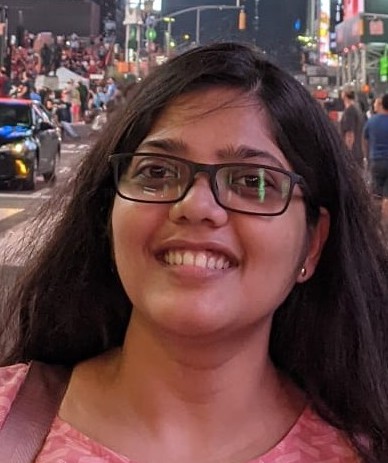
Sonali Chaudhuri [Lab Notebook]
Sonali joined our program in Fall, 2021; when we were still barely starting to come back to in-person operations after the lockdown of 2020 and 2021. Like many of our other doctoral students, she started doing some preliminary work on her thesis research as soon as she was offered and accepted admission, even as she was continuing to work at the full-time industry position she held before moving to doctoral studies. She is working in the broad area of Software Defined Networking, and in particular has been studying the emerging paradigm called P4. She hopes to contribute research that will make the network increasingly more programmable, and allows ever closer integration with application and orchestration software. On a parallel track, she has been studying the problem of drone trajectory design informed by multiple base station coverage. She passed her qualifier in Fall, 2022.
Baisakhi Chatterjee [Lab Notebook]
In normal times, Baisakhi would have joined our PhD program in Fall, 2020, but the Covid-19 pandemic intervened. Like many other students worldwide she postponed her higher education plans, and continued working on her current job, deferring her admission to finally join in Fall, 2021. However, Baisakhi had energy to spare, and made progress toward her research even in that “deferment” year, in learning several algorithmic techniques and tools, and even trying her hand at a “toy” research problem to see how all the processes of research come together. She is studying the effect of networking performance on coordinated trajectory control of an autonomous platoon of drones, and passed her PhD Qualifier exam in Spring, 2022.
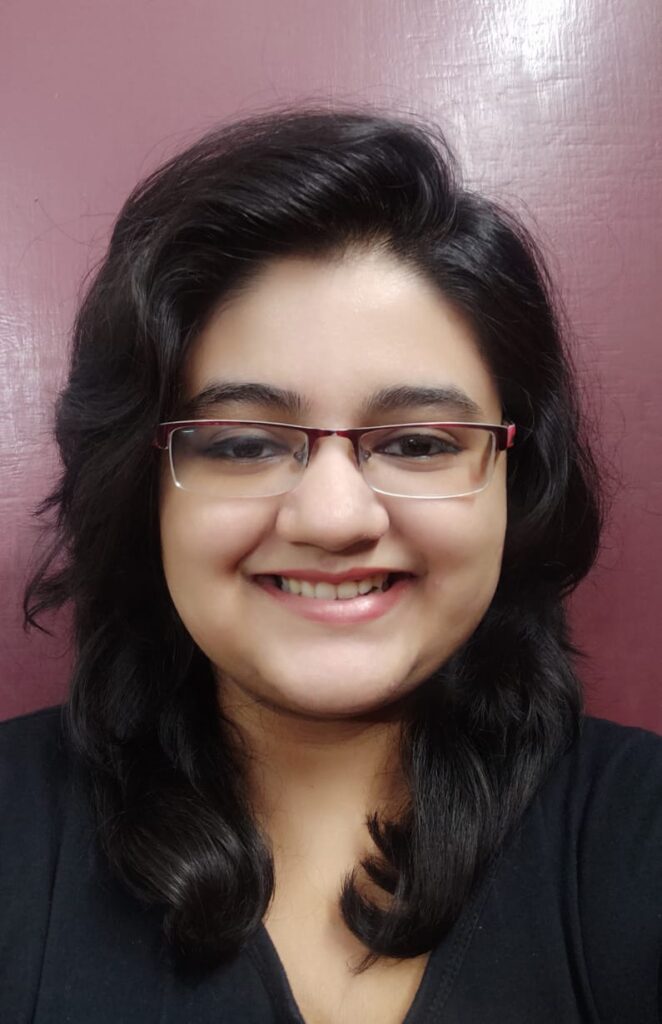
Graduated Students

Tripti Samal [Lab Notebook]
Graduated (Ph.D.) in Spring, 2024. Tripti worked in the exciting emerging area of security of the Internet of Things. The traditional chaining of trust and the use of central trust authorities are not always usable to establish trust in the processor-poor and often-disconnected contexts of IoT, and blockchains appear a good fit for creating distributed trust in such environments. However, Tripti’s thesis work articulated the essential problem in creating trust in IoT and cyberphysical networks, and showed that information-security mechanisms (such as crypto and blockchain) were not sufficient in generating foundational trust among agents in a multi-agent IoT network, since no amount of information security mechanisms could verify the truthfulness of an agent a priori – but since agents were embedded in a common physical context, the shared physical space could be used to verify the truth of assertions made by agents, using a framework she built. Tripti went on to employment at NetApp.
William Brockelsby [Lab Notebook]
Graduated (Ph.D.) in Fall, 2022. Will has been working full time as a Network Engineer and Architect at Duke University, but managed to make progress on research, and publishing, even while doing so. His work focused on the evolutionary use of Software Defined Networking techniques in real enterprise networks, by studying the pros and cons of such deployments in real-world environments, and identifying optimal factoring and placement of network policy, from the level of individual tables within Network Elements, to enterprise-wide views. In the final stretch of his doctoral work, Will focused on the large-scale end of such deployments. Will successfully defended his doctoral thesis in October, 2022.

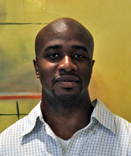
Robinson Udechukwu [Web] [Lab Notebook]
Graduated (Ph.D.) in Spring, 2021. Rob received a B.S. from our department in 2010, and was back for the Ph.D. degree after a stint in the industry, we were glad to have him back! He was interested in network architecture in general, and worked on both the ChoiceNet project, and the JUNO Optical ChoiceNet project, and designed service representation, negotiation, purchasing, and provisioning methods in those frameworks. The bulk of this thesis research went toward a comprehensive study of the effects of interaction of customer and provider strategies in hybrid optical packet-circuit networks, and designing strategies that result in collaborative optimization of network performance, for a win-win scenario. He published over a dozen papers during his PhD, and graduated in Spring, 2021. For the last few years of his PhD, he had been also working full time at NetApp, and continued doing so after graduation.
Harshavardhan Joshi [Lab Notebook]
Graduated (Ph.D.) in Fall, 2020. Harsh took an M.S. degree from NCSU (ECE Dept.), and then spent some years working for Cisco, before returning to academia to follow up his interest in network security through doctoral study. Harsh successfully defended his doctoral thesis in October, 2020, in the videoconfernece format that became the norm during the Covid-19 pandemic! The bulk of his doctoral work was on detection of botnets from partial traffic traces. Harsh also studied the issue of alternative decompositions of the same overall security functionality over an enterprise network, and specific issues at the intersection of security and SDN, such as RoP attacks on obfuscated code. Toward the end of his PhD, he transitioned to the AERPAW project as a Network and Systems Architect. Harsh continued in this position, and contributed to this nationally unique research facility, for a few months beyond his degree completion, before transitioning to a more traditional job. AERPAW was very glad to have had this effort from him at a crucial juncture in the project! In his new role, Harsh is helping design datapaths for future (and futuristic) forwaring engine products.
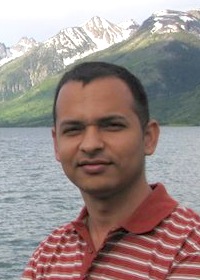

Russell Meredith
Graduated (Ph.D.) in Summer, 2019. Russell was advised by Dr. Douglas Reeves, and co-advised by me for the last stretch of his doctoral thesis, since his Oral Preliminary examination. His primary work has been in security of Open Shortest Path First (OSPF), the routing workhorse of the Internet. Russell examined several key vulnerabilities of OSPF, and conceived and demonstrated various security mechanisms at various levels, which together make for comprehensive security against OSPF attackers.
Shireesh Bhat [Email]
Graduated (Ph.D.) in Summer, 2017. Shireesh came to NCSU to study for a Master’s degree, but decided to stay for the long haul – good for him! He was advised by my colleague George Rouskas, and co-advised by me. He worked on semantic issues in future Internet architecture, specifically on defining the service definition and composition semantics for our ChoiceNet project.
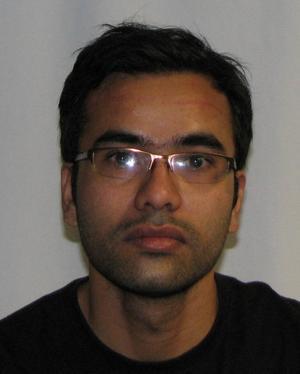

Magreth Mushi [Web] [Lab Notebook]
Graduated (Ph.D.) in Summer, 2016. Magreth arrived at NCSU from Tanzania, where she had been working as a faculty member. She studied the seldom-addressed problem of the human processes of network administration and management, and the effect of network design on reducing or increasing the likelihood of human errors. She went on to design an SDN-based system that provided real-time sanity checks for network managers, and implement a proof-of-concept system on an industrial standard system. She went on to work for a non-profit company for a time, and then returned to contribute to her native Tanzania’s national education network TERNet, where she served as Director, with an additional faculty appointment at Tanzania Open University, for a number of years. Since 2021, she has joined the AERPAW Project as Chief Architect and DevOps support.
Ramachandra “Kasyap” Marmavula [Lab Notebook]
Graduated (M.S.) in Summer, 2014. Kasyap designed and demonstrated an extension to OpenFlow to allow specification of arbitrary byte matches in application layer header and payload in a packet, and extended the Linc software switch to realize this extension. Apart from his thesis work, he was an active contributor to my CentMesh project, and was instrumental in hosting the CentMesh Drones Challenge 2014. Kasyap joined Citrix after graduating.


Trisha Biswas [Web] [Lab Notebook]
Graduated (Ph.D.) in Spring, 2014. Trisha worked mainly in the area of multihop wireless networks, in the direction of robustness in the face of natural and malicious jamming, or other attacks. Her primary work has been in Petal Routing, which uses several different types of geo-diverse or diffuse multipaths to provide network-layer redundancy in the face of jamming. She also workd on using linear systems theory to characterizing the performance of such approaches. She went on to join Aruba Networks after graduation.
Ahmet “Can” Babaoglu [Web] [Lab Notebook]
Graduated (Ph.D.) in Spring, 2014. Can (he goes by his middle name – which is pronounced “Jon”) has worked primarily toward future Internet architecture issues – he contributed to parts of the SILO project, and studied and designed future Internet verification architectures, especially in context of ChoiceNet, our future Internet project. He was also deeply involved in GENI, carrying the development side of my GENI project singlehandedly. In his spare time he published some research on optical network design as well, on converter placement. He went on to join Riverbed Technologies upon graduation.


Hui Wang [Email]
Graduated (Ph.D.) in Spring, 2013. Hui was advised by my colleague George Rouskas, and co-advised by me. She worked on efficient formulations and relaxations of Integer Linear Programs for traffic grooming in optical networks.
Ashutosh K Grewal
Graduated (M.S.) in Summer, 2012. He designed a protocol to attach sensor-rich devices to CentMesh. Ashu went on to join Juniper Networks in Sunnyvale, California.
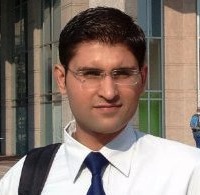

Parth H Pathak [Email]
Graduated (Ph.D.) in Summer, 2012. Parth worked on wireless mesh network design – early on, he studied power control on its own, and later focused on the survivability and network continuity aspects of mesh networks. He published several papers and collaborated on a book with me, which was published in late 2012. Parth moved on to a post-doctoral fellowship at UC Davis, and now is a faculty member at George Mason University in Washington, DC.
Sankalp U Nimbhorkar
Graduated (M.S.) Spring, 2012. Sankalp worked on implementing and verifying the performance of a back-pressure based spectrum width allocation in a mesh network. He joined VMWare after graduation.


Gaurang S Sinkar
Graduated (M.S.) Fall, 2011. Gaurang proposed a cooperative Sybil detection algorithm based on a puzzle based challenge-response approach, suitable for sensor networks. Gaurang joined Cisco after graduating.
Gaurish Deuskar
Graduated (M.S.) Summer, 2010. Gaurish’s thesis explored the possiblity of gaining some throughput efficiency by small packet aggregation in a multi-hop wireless network with back-pressure rate control without sacrificing fairness or congestion control too much. It turned out that the introduction of aggregation actually allowed improvement of the back-pressure mechanism. Last I heard Gaurish works for Qualcomm.


Umang S Patel
Graduated (M.S.) Fall, 2010. Umang’s thesis work proposed a way to quantify the vulnerability of a multi-hop path in a wireless network to jamming, and proposed static and adaptive approaches to finding multiple redundant paths with low vulnerability. Umang joined Qualcomm after graduating.
Anjing Wang
Graduated (Ph.D.) Summer, 2010. Anjing’s thesis work focused on future Internet architecture – he was the main contributor to SILO. He studied various design decisions for the SILO architectural vision, and realized prototype implementations. Anjing also studied the various technologies and techniques that fall under the term network virtualization. He was advised by me, and co-advised by George Rouskas. Anjing joined Ericsson after graduating.
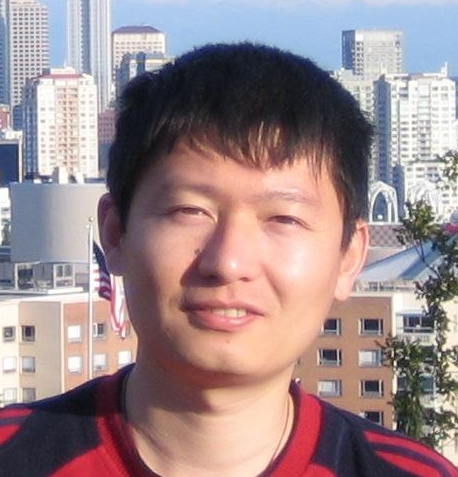
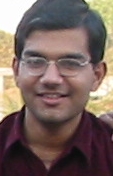
Mohan L Iyer
Graduated (Ph.D.) Summer, 2010. Mohan was advised by George Rouskas, and co-advised by me. His thesis work was centered around providing bandwidth services for cloud providers on demand. Mohan studied network resource allocation to optimize such bandwidth services, SILO extensions to support high-bandwidth flows, grooming low-bandwidth flows, and heirarchical waveband switching. Mohan graduated to join Oracle.
Suresh K Subramanian
Graduated (Ph.D.) Summer, 2010. Suresh was a mid-career Ph.D. student – he was working for Lucent when he started; he moved to Cisco during his Ph.D. Suresh investigated performance issues of SIP. While the performance of media or voice over a data network has been studied extensively, the performance of the control plane is also crucial but generally had not been studied. Suresh used queueing models, simulation, and actual experimentation with real SIP software, to study and characterize the performance of the SIP control plane.


Suresh K Subramanian
Graduated (Ph.D.) Summer, 2010. Suresh was a mid-career Ph.D. student – he was working for Lucent when he started; he moved to Cisco during his Ph.D. Suresh investigated performance issues of SIP. While the performance of media or voice over a data network has been studied extensively, the performance of the control plane is also crucial but generally had not been studied. Suresh used queueing models, simulation, and actual experimentation with real SIP software, to study and characterize the performance of the SIP control plane.
Deepa Seshadri
Graduated (M.S.) Summer, 2008. Deepa studied green grooming – traffic grooming with the objective of minimizing the energy expenditure of the complete set of lightpaths.
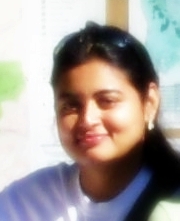

Manoj Vellala
Graduated (M.S.) Spring, 2008. Manoj worked on the SILO project, and contributed concepts and prototype effort.
Dheeraj Kandula
Graduated (M.S.) Spring, 2008. Dheeraj studied vehicular networks and Delay/Disruption tolerant networks, and proposed a TCP variant that was suitable for use in message-ferry networks.

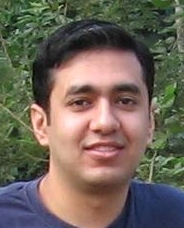
Vineet K Sahijwani
Graduated (M.S.) Fall, 2006. Vineet’s work was aimed at increasing the efficiency of middleware for large transaction based systems which transmit a lot of XML back and forth. Multiple on-the-wire XML representations exist; Vineet’s work showed how the system can utilize different representations at different times to increase efficiency. Vineet graduated to join Cisco.
Bhushan Bhatt
Graduated (M.S.) Fall, 2006. Bhushan followed up on earlier work by Sharat Visweswara to design a medium access approach for wireless sensor networks based on the idea of period inflation – nodes closer to the gateway have controlled longer periods for periodic sleep/wakeup.
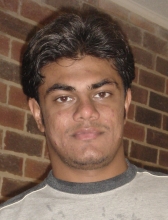

Shu Huang
Graduated (Ph.D.) Summer, 2006. Shu dealt with many optimization problems that come up in the design of large networks, including articulating various realistic models of dynamic traffic, designing a slack allocation algorithm to maximize mean time to traffic blocking, and designing a wireless multihop network under a realistic physical (additive) model of interference. After graduation, Shu joined the Rennaissance Computing Institute (RENCI) of North Carolina.
Pritesh K Patwa
Graduated (M.S.) Summer, 2006. Pritesh studied vehicular networks, in particular, he extended an existing dense-fluid model for roadway traffic flow for the case where a vehicular network allowed drivers to be informed in advance of congestion ahead, and take alternate routes – thus changing the traffic flow itself. Pritesh joined Microsoft after graduating.

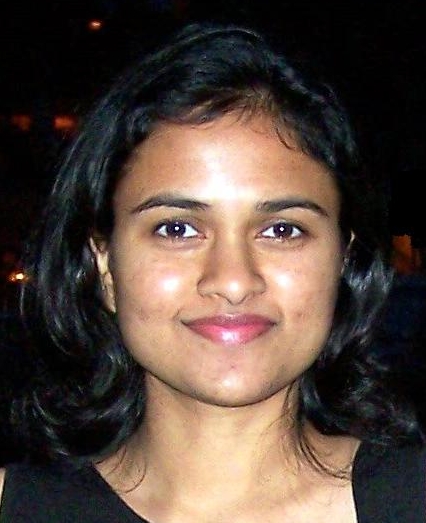
Divya Gupta
Graduated (M.S.) Summer, 2006. Divya worked on developing simple models for the throughput and delay of multihop wireless networks – her main contribution was the concept of loner links in such networks: links which interfered with so many other links that they effectively demanded a schedule slot each its own. The set of loner links dominates the schedule length in such cases.
Bensong Chen
Graduated (Ph.D.) Summer, 2005. Bensong was advised by me and co-advised by George Rouskas. He worked on various aspects of heirarchical traffic grooming. obtained NP-completeness results for various grooming problems, constructed heuristic algorithsm, and also designed clustering algorithms for the heirarchical algorithms to operate on. Bensong joined Google Labs after graduation.


Sharat Visweswara
Graduated (M.S.) Summer, 2004. Sharat studied the general idea of sensors spending most of their time in sleeping mode to conserve energy and waking up periodically to perform and forward measurements, but under the assumption that the period of the various sensors are different according to a statistical distribution due to clock drift and other reasons. He showed that over time this resulted in the periods interacting in an unexpected way, and went on to quantify the benefit of lower sleep traded off with missed readings. Sharat joined Amazon after graduating.
Ruarob Tiyachate
Graduated (M.S.) Spring, 2004. Ruarob studied the problem of joint grooming and survivability in optical networks, articulated the various levels at which the problems could be decoupled and their efficiency implications, and designed a heuristic algorithm. He returned to Thailand after graduation to join Celestia.


Apurva Goel
Graduated (M.S.) Spring, 2004. Apurva studied controlled delaying of sensor reading packets to ensure a local periodicity for sensor networks utilizing a sleep/wakeup cycle.
Ruhiyyih Mahalati
Graduated (M.S.) Fall, 2003. Ruhiyyih attacked the problem of reconfiguration of the virtual topology of an optical network that also utilizes grooming. The objective functions for these two goals are difficult to compare, since one is a rate and the other is incurred only at distinct epochs of time. Ruhiyyih was able to formulate a joint problem, which she then went on to linearize, and also designed heuristic approaches. Ruhiyyih joined Microsoft after graduation.


Koundinya Srinivasarao
Graduated (M.S.) Summer, 2003. Koundinya worked on traffic grooming in ring networks, and designed two heuristic approaches based on decomposition; one based on grouping the nodes, and the other on partitioning the traffic matrix. He showed that the second approach is more general but more difficult, and developed a test for traffic matrices based on clustering to determine when the first approach would work equally well. Last I heard, Koundinya was working at OPNET.
Prashant Iyer
Graduated (M.S.) Spring, 2003. Prashant was advised by Carla Savage (with whom he went on to work for his Ph.D.), and co-advised by me. Prashant studied the problem of traffic grooming in paths, and showed that several flavors of the problem, distinguished by their cost functions, were not equivalent, but were all NP-complete. He also articulated the NP-completeness cliff in several directions, showing that the problem was tractable if the traffic distribution was uniform, or there were only two wavelengths, or all traffic was bound for a single egress node.


Shu Huang
Graduated (M.S.) Spring, 2003. Shu worked on traffic grooming in the path topology, and showed that even in this very elemental topology, some versions of the problem were NP-complete, including even cases where the virtual topology had already been specified. He also designed heuristic algorithms for the problem. After graduation, Shu returned to China to work for a period, and later joined NCSU again as a graduate student to work for his Ph.D. degree with me.